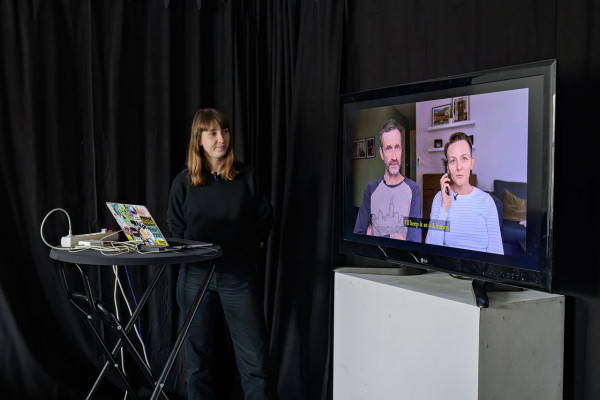Dasha Ilina is a Russian artist based in Paris. Through the employment of low-tech and DIY approaches, her work questions the desire to incorporate modern technology into our daily lives by highlighting the implications of actually doing so. Her practice engages the public in order to facilitate a space for the development of critical thought regarding social imperatives for care of oneself and others, privacy in the digital age, and the reflexive contemporary desire to turn to technology for answers.
She is the founder of the Center for Technological Pain, a project that proposes DIY solutions to health problems caused by digital technologies for which she has received an Honorary Mention at Ars Electronica. Ilina’s work has been exhibited at institutions such as Centre Pompidou (FR), MU Artspace (NL), Gaîté Lyrique (FR), Hartware Medienkunstverein Dortmund (DE), NeMe (CY), as well as various talks, workshops, and performances held internationally. She is also the co-director of NØ SCHOOL, a summer school that focuses on critical research around the social and environmental impacts of information and communication technologies.
Supisara Burapachaisri is an artist with former training in communication, digital marketing, and graphic design. Her practice is informed by ‘misusing’ tools in ways they’re not meant to be used, looking for ‘cracks’ in software and hardware, and repurposing them as opportunities to learn, intervene, and explore alternatives that are accessible, relatable, and playful. Currently, she is doing her master’s degree in Experimental Publishing at the Piet Zwart Institute.
